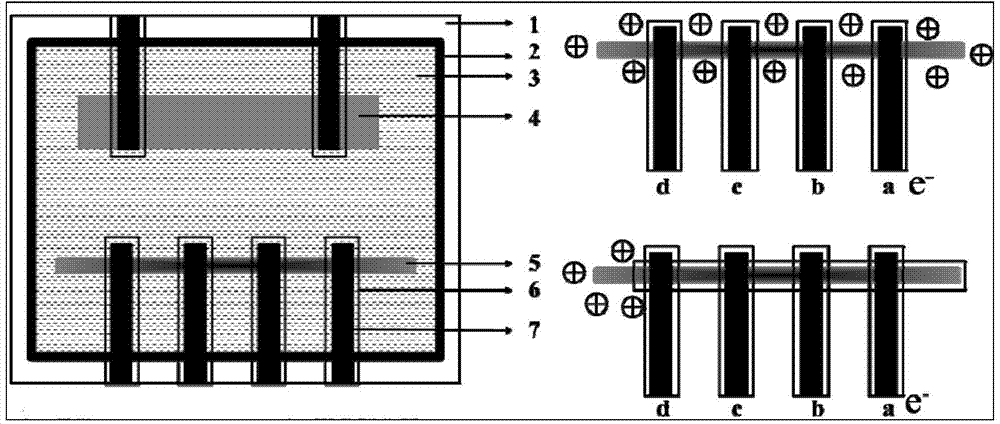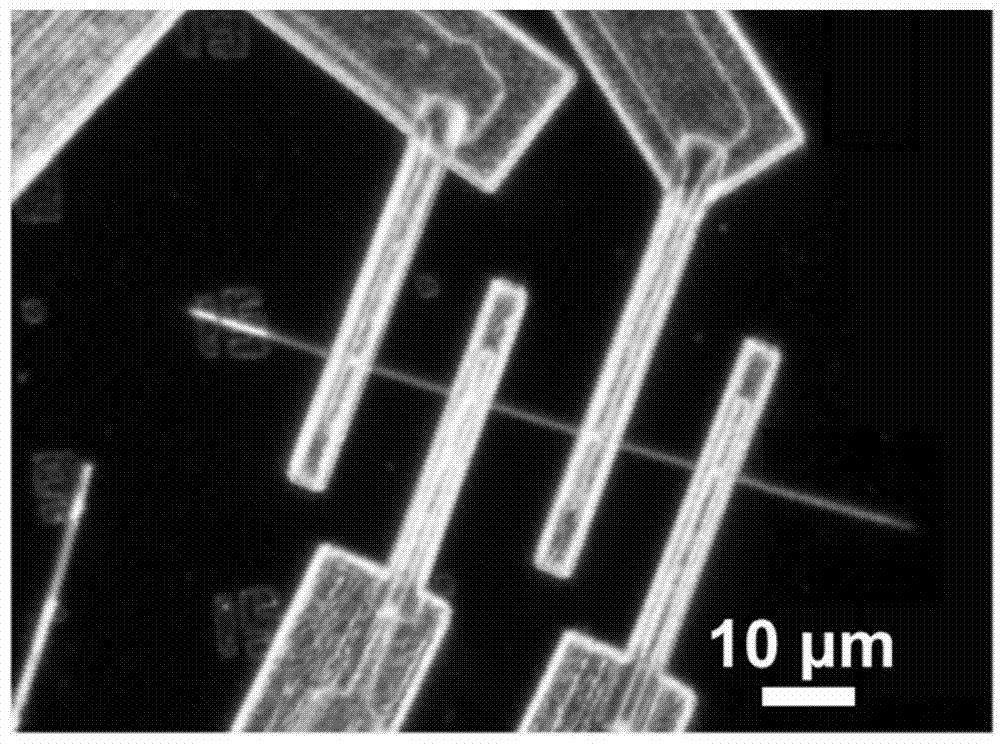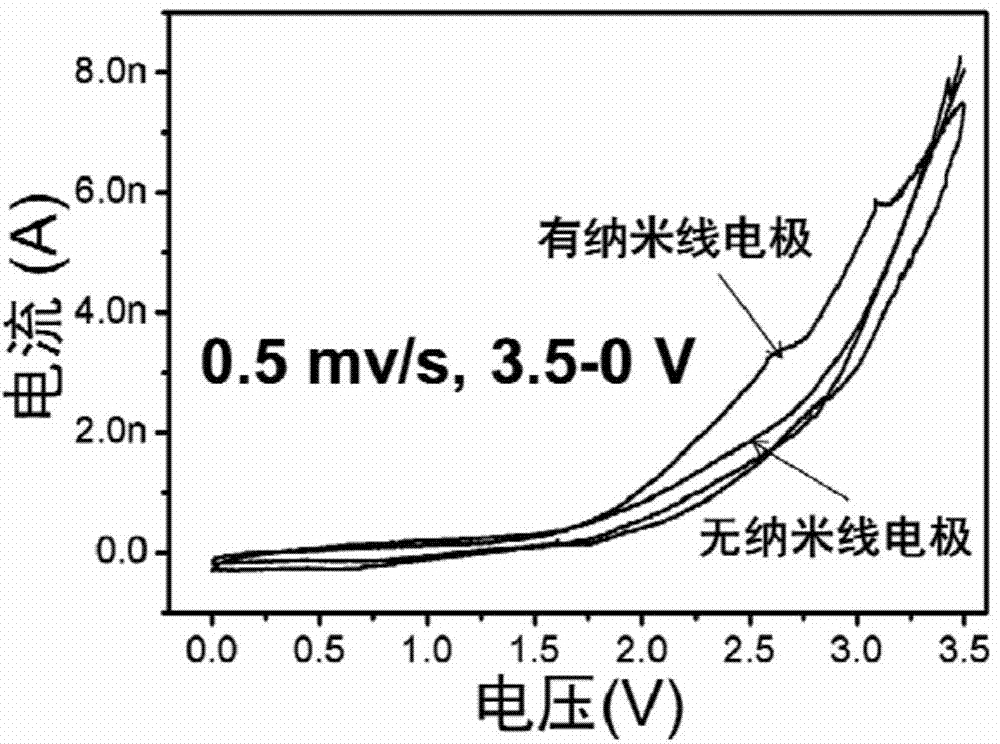Method for in-situ analyzing charging-discharging transport mechanism of Li<+> ions or Na<+> ions in nanowire
An in-situ analysis, nanowire technology, applied in the field of nanomaterials and electrochemistry, can solve the problems of lack of diversity in open battery device design, nanowires cannot be immersed, and insufficient electrochemical analysis.
- Summary
- Abstract
- Description
- Claims
- Application Information
AI Technical Summary
Problems solved by technology
Method used
Image
Examples
Embodiment 1
[0032] In situ analysis of Li + ion or Na + A new method for the charge-discharge transport mechanism of ions in nanowires, which includes the following steps:
[0033] 1) Put V 3 o 7 The nanowire positive electrode 5 and the highly oriented pyrolytic graphite film negative electrode 4 are dispersedly deposited on the surface with a layer of 300nm thick SiO 2 on the silicon substrate 1, where V 3 o 7 The nanowires are prepared by the hydrothermal method, and the highly oriented pyrolytic graphite film is prepared by the mechanical exfoliation method;
[0034] 2) Using techniques such as electron beam lithography in V 3 o 7 Cr (5nm) and Au (150nm) metal electrodes are made at the quintile point of the nanowire and at both ends of the highly oriented pyrolytic graphite film as current collectors (such as figure 2 shown);
[0035] 3) Coating photoresist SU82002, and using electron beam etching technology to make the photoresist cover the metal electrode current collecto...
Embodiment 2
[0040] In situ analysis of Li + ion or Na + A new method for the charge-discharge transport mechanism of ions in nanowires, which includes the following steps:
[0041] 1) Put V 3 o 7 Nanowire positive electrode and highly oriented pyrolytic graphite film negative electrode are dispersedly deposited on the surface with a layer of 300nm thick SiO 2 on the silicon substrate, where V 3 o 7 The nanowires are prepared by the hydrothermal method, and the highly oriented pyrolytic graphite film is prepared by the mechanical exfoliation method;
[0042] 2) Using techniques such as electron beam lithography in V 3 o 7 Cr (5nm) and Au (150nm) metal electrodes are made at the quintile point of the nanowire and at both ends of the highly oriented pyrolytic graphite film as current collectors (such as Figure 6 shown);
[0043] 3) Coating photoresist SU82002, and using electron beam etching technology to make the photoresist cover the metal current collector as a protective layer;...
Embodiment 3
[0049] In situ analysis of Li + ion or Na + A new method for the charge-discharge transport mechanism of ions in nanowires, which includes the following steps:
[0050] 1) Put V 3 o 7 Nanowire positive electrode and highly oriented pyrolytic graphite film negative electrode are dispersedly deposited on the surface with a layer of 300nm thick SiO 2 on the silicon substrate, where V 3 o 7 The nanowires are prepared by the hydrothermal method, and the highly oriented pyrolytic graphite film is prepared by the mechanical exfoliation method;
[0051] 2) Using techniques such as electron beam lithography in V 3 o 7 Cr (5nm) and Au (150nm) metal electrodes are made at the quintiles of the nanowires and at both ends of the highly oriented pyrolytic graphite film as current collectors;
[0052] 3) Coating photoresist SU82002, and using electron beam etching technology to make the photoresist cover the metal current collector as a protective layer;
[0053] 4) Use polydimethyls...
PUM
 Login to View More
Login to View More Abstract
Description
Claims
Application Information
 Login to View More
Login to View More - R&D
- Intellectual Property
- Life Sciences
- Materials
- Tech Scout
- Unparalleled Data Quality
- Higher Quality Content
- 60% Fewer Hallucinations
Browse by: Latest US Patents, China's latest patents, Technical Efficacy Thesaurus, Application Domain, Technology Topic, Popular Technical Reports.
© 2025 PatSnap. All rights reserved.Legal|Privacy policy|Modern Slavery Act Transparency Statement|Sitemap|About US| Contact US: help@patsnap.com



